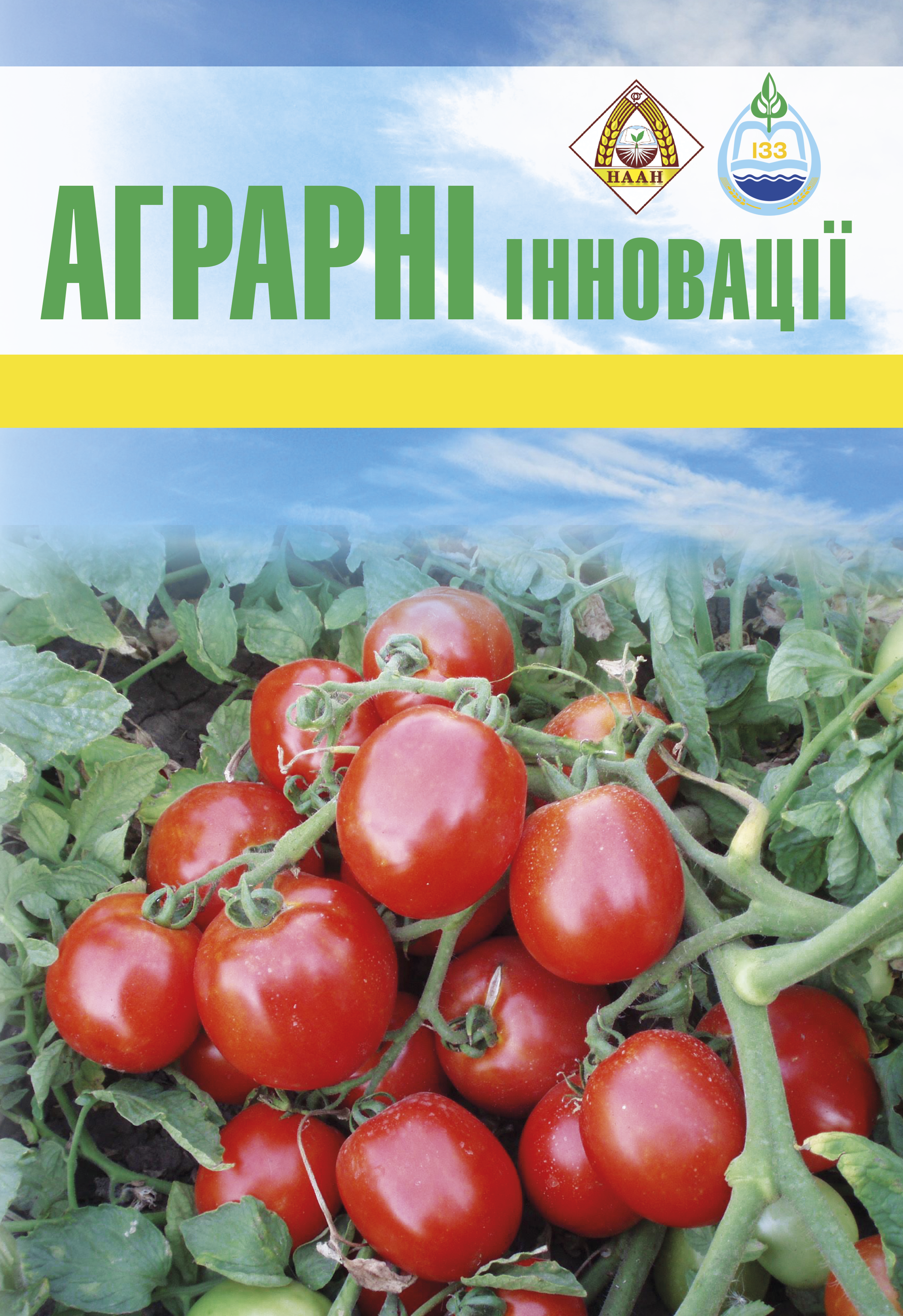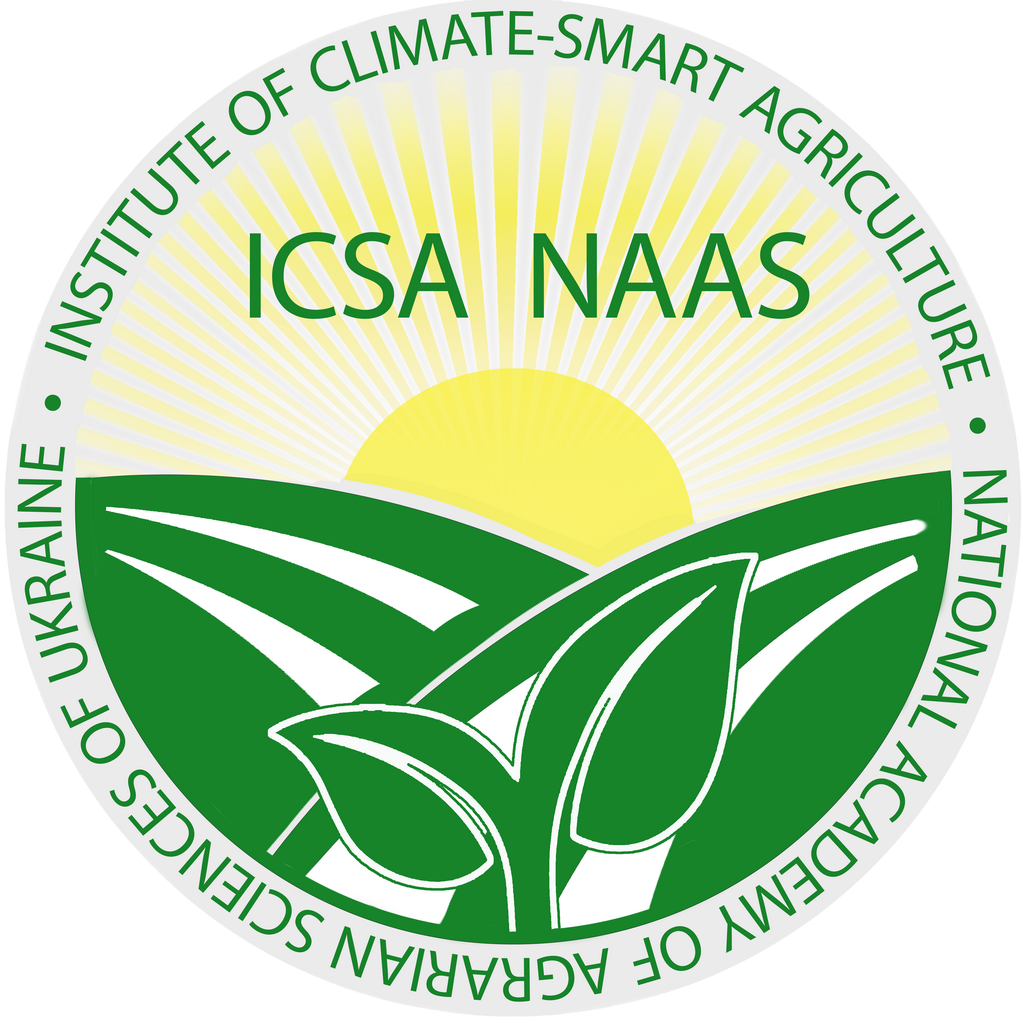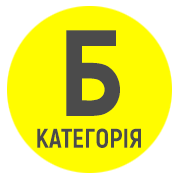Mustard pests in Ukraine and the world: an extended overview
Abstract
Mustard is of great economic importance as an oilseed crop. Four types of mustard are grown in the world: white, or English, gray, or Sarepta, black, or French, and Abyssinian, or Krambé. The world area occupied by mustard is about 3.0 million hectares. The vital activity of the harmful mustard entomological complex reduces the potential yield by 30–40% or more. The purpose of the article is to conduct a critical analysis of domestic and foreign scientific literature sources on the harmful entomofauna of mustard agrocenoses. In order to establish the dominant species of mustard pests that may have economic significance, the authors analyzed more than 50 domestic and foreign literary sources on the structure of the entomocomplex of oilseed cabbage agrocenoses. From the conducted critical analysis of scientific literature, we can see that in all countries where mustard is grown, a fairly diverse species composition of harmful insects can be observed. More than 50 species of pests have been described in Ukraine. The dominant ones are cruciferous fleas, rapeseed mealybugs, cruciferous bugs, cabbage stem cryptic beetles, rapeseed sawfly and cabbage aphids. In Europe, the species composition of mustard pests is quite diverse. In Europe, the species composition of mustard pests is quite diverse, numbering about 100 species. The most harmful species include cruciferous fleas, cryptic beetles, rapeseed mealybugs. In Central Asia, mustard is damaged by more than 80 species of pests. The most dangerous are cruciferous fleas, rapeseed sawfly, cabbage moth, mustard whitefly, mustard leafhopper, alfalfa and beet bugs. The entomological complex of oilseed rape crops in China includes 39 species of phytophagous insects, and in Mongolia – 25 species. In North America, the most economically important species are the mustard whitefly and the cabbage moth.
References
2. Євтушенко М.Д., Станкевич С.В., Вільна В.В. Хрестоцвіті блішки, ріпаковий квіткоїд на ріпаку ярому й гірчиці у Східному Лісостепу України: монографія. Харків: Майдан, 2014.170 с.
3. Євтушенко М.Д., Вільна В.В., Станкевич С. В. Хрестоцвіті клопи на ріпаку ярому й гірчиці у Східному Лісостепу України: монографія. Харків: ФОП Бровін О.В., 2016. 184 с.
4. Євтушенко М.Д., Федоренко Н.В., Станкевич С.В. Видовий склад та динаміка чисельності основних шкідників олійно-капустяних культур у Харківській області. Вісн. Харк. нац. аграр. ун-ту ім. В. В. Докучаєва. Серія «Ентомологія та фітопатологія». 2008. № 8. С. 47–54.
5. Журавський В. С., Секун М. П. Хімічний метод обмеження чисельності основних шкідників ярого ріпаку. Наук.-техн. бюл. Ін-ту олійних культур УААН. 2007. Вип. 12. С. 188–192.
6. Журавський В. С., Секун М. П., Скрипник О. В. Інсектициди проти хрестоцвітих блішок на ярому ріпаку. Захист і карантин рослин: міжвід. темат. наук. зб. 2007. Вип. 53. С. 59–63.
7. Кава Л., Станкевич С. Шкідники ріпаку готуються до нового сезону. Пропозиція. 2013. № 3 (218). С. 120–122.
8. Колеснік Л. І. Основні шкідники капусти білоголової у східному лісостепу України. Екологія і прогноз розвитку: автореф. дис. канд. біол. наук. Харків, 2007. 20 с.
9. Красиловець Ю. Г. Наукові основи фітосанітарної безпеки польових культур. Харків: Магда LTD, 2010. 416 с.
10. Кришталь О. П. Комахи-шкідники сільськогосподарських рослин в умовах Лісостепу та Полісся України. Київ: Вид. Київ. ун-ту, 1959. 358 с.
11. Круть М. Комплексний захист ріпаку від шкідників. Пропозиція. 2003. № 10. С 70–71.
12. Круть М. На озимому та ярому ріпаку мешкає близько 50 видів шкідників. Зерно і хліб. 2011. № 3. С. 60–61.
13. Лаба Ю. Р. Шкідники ріпаку. Видовий склад в умовах центрального та західного Лісостепу України. Насінництво. 2009. № 2. С. 11–13.
14. Лаба Ю Р. Обґрунтування захисту ріпаку від шкідників у Центральному Лісостепу України: автореф. дис. канд. с.-г. наук. Київ, 2012. 20 с.
15. Секун М. П. Захист посівів ярого ріпаку від шкідників. Агроном. 2009. № 2. С. 80–84.
16. Станкевич С.В., Кава Л.П. Шкідники ріпаків озимого і ярого у східному та центральному Лісостепу України. Наук. Доп. НУБіП України. 2014. № 4. URL: http://nbuv.gov.ua/j-pdf/Nd_2014_4_11.pdf
17. Станкевич С.В., Кава Л.П. Видовий склад шкідників ріпаків озимого і ярого у Східному Лісостепу України. Наук. огляд. 2014. Т. 8. Вип. 9. С. 79–86.
18. Яковлєв Р. В. Особливості формування структури ентомофауни агроценозу гірчиці у Південно-Східному Лісостепу України. Захист і карантин рослин: міжвід. темат.зб. 2008. Вип. 54. С. 376–380.
19. Яковлєв Р. В. Шкідливість фітофагів на посівах гірчиці в умовах Лісостепу України. Зб. тез міжнар. конф. «Сучасні наукові проблеми створення сортів та гібридів олійних культур та технології їх вирощування». Запоріжжя: Диво, 2009. С. 89–90.
20. Яковлєв Р. В., Рубан М. Б. Основні фітофаги гірчиці та їх шкідливість у Лісостепу України. Наук. вісник НУБіП України. 2010. Вип. 145. С. 154–161.
21. Яковлєв Р В. Ентомокомплекс гірчичного агроценозу та заходи регулювання його чисельності в Лісостепу України: автореф. дис. канд. с.-г. наук. Київ, 2012. 20 с.
22. Яковлєв Р.В. Ентомокомплекс гірчичного агроценозу: монографія. Київ: Компринт, 2016. 192 с.
23. Andersen A. Kjos Ø., Nordhus E., Johansen N. S. Resistens mot pyretroider hos rapsglansbille – hva nå?. Plantemotet. 2008. № 3 (1). S. 94–95.
24. Buchs W. Tierische schadlinge unol Ihre Antogonisten in Rapsculturen. [Arbeiten Zu Biologie, Epidemiologie, naturlicher Regulation аnd chemischer Bekampfung in der 100-Janrigen Geschichte der Biologischen Bundesantalt fur Land – und Forstwireschaft]. Mitt. Biol. Bundesanst. 1998. № 340. P. 86–106.
25. Carrel K., Schmid J. E., Stamp P. Bedeutung gentechnisch veränderter Krankheits- und schädlingsresistenter Kulturpflanzen für Pflanzenbau und Pflanzenzüchtung. Zürich: Institut für Pflanzenwissenschaften Bereich Ackerbau, 1995. 95 s.
26. Castro A. R. „Оruga“ o „coqullo“ de la alfalfa (Colaspidema atrum.) Estacion de fitopatologia agricola de Almeria. 1934. P. 259.
27. Evenden M. L., Keddie B. A. L. Body size, age, and disease influence female reproductive performance in Synchloe daplidice L. (Lepidoptera: Pieridae). Annals of the Entomological Society of America. 2006. № 5. Р. 837–844.
28. Harcourt D. G. Biology of the diamondback moth, Plutella maculipennis (Curt.) (Lepidoptera: Plutellidae), in eastern Ontario. II. Life-history, behaviour, and host relationship. The Canadian Entomologist. 1957. № 12. Р. 554–564.
29. Hillyer R. J., Thorsteinson A. J. The influence of the host plant or males on ovarian development or oviposition in the diamondback moth, Plutella maculipennis (Curt.). Canadian Journal of Zoology. 1969. № 47. Р. 805–816.
30. Hoffman G. M., Schmutterer H. Parasitäre Krankheiten und Schädlinge an landirtschaftlichen Kulturpflancen. Stuttgart: Verlag Eugen Ulmer, 1983. 488 s.
31. Johnen A. Der Rapserdfloh ist wieder ein Thema! Raps. 2006. № 1. S. 10–15.
32. Johnen A. Klingenhagen G. Schedlingskontrolle im Raps. Bekämpf-ungsstrategien und Entscheidungshifiten. Raps. 2006. № 1. S. 18–23.
33. Knoll D. Pflanzenschutz im Raps Erfahrungen und Empfehlungen aus schleswig-holstcinischer Sicht. Raps. 1997. № 1. S. 36–38.
34. Löhr B., Gathu R. Evidence of adaptation of diamondback moth, Plutella xylostella (L.), to pea, Pisum sativum L. Insect Science and its Application. 2002. № 22. Р. 161–174.
35. Marczali Z. A termesztett keresztesvirágú növényeken élő Meligethes és Ceutorhynchus fajok elterjedése és ökológiája: doktori (phd) értekezés. Marczali – keszthely, 2006. 129 s.
36. Mrówczyński M. Uszkadzanie typów i odmian rzepaku ozimego przez szkodniki. Część III. Szkodniki kwiatostanów i łuszczyn. Prace Nauk. Inst. Ochr. Roślin. 1992. № 34 (1/2). S. 45–62.
37. Mrówczyński M. Studium nad doskonaleniem ochrony rzepaku ozimego przed szkodnikamiю Rozpr. Nauk. Inst. Ochr. Roślin. 2003. №. 10. 61 s.
38. Mrówczyński M.. Praczyk, H. Wachowiak, M. Korbas, R. Gwiazdowski Integrovaná ochrana řepky před škůdci, chorobami a plevely v Polsku. Sborník konference s mezinárodní účastí «Řepka, mák, hořčice 2006». Praha, 2006. S. 103–116.
39. Mrówczyński M. Pruszyński G., Wachowiak H., Bereś P. Nowe zagrożenia upraw rolniczych przez szkodniki ze szczególnym uwzględnieniem kukurydzy. Progress in Plant Protection / Postępy w Ochronie Roślin. 2007. № 47 (1). S. 323–330.
40. Mrówczyński M., Pruszyński G. Metodyka integrowanej produkcji rzepaku ozimego i jarego. Warszawa, 2007. 96 s.
41. Plagas del campo. Memoria del Servicio fitopatologico Agricola. Ministerio de agriculture. Madrid, 1933. 250p.
42. Stankevych, S.V., Yevtushenko, M.D., Vilna, V.V. et al. Integrated pest management of flea beetles (Phyllotreta spp.) in spring oilseed rape (Brassica napus L.). Ukrainian Journal of Ecology, 2019. 9(3), 198–207. DOI: 10.15421/2019_730
43. Stankevych, S.V., Yevtushenko, M.D., Vilna, V.V. et al. Efficiency of chemical protection of spring rape and mustard from rape blossom beetle. Ukrainian Journal of Ecology, 2019. 9(4), 584–598. DOI: 10.15421/2019_794
44. Stankevych, S.V., Yevtushenko, M.D., Zabrodina, I.V. et al. Pests of oil producing cabbage crops in the eastern forest–steppe of Ukraine. Ukrainian Journal of Ecology, 2020. 10(5), 223–232. DOI: 10.15421/2020_234
45. Stankevych S.V., Yevtushenko M.D., Zabrodina I.V. et al. Species ratio in the complex of the cruciferous bugs and seasonal dynamics of the population number. Ukrainian Journal of Ecology, 2021. 10 (6), 243–248. DOI: 10.15421/2020_289
46. Stankevych, S.V., Yevtushenko, M.D., Vilna, V.V. et al. Species ratio in the complex of the cruciferous bugs and seasonal dynamics of the population number. Ukrainian Journal of Ecology, 2021. 11 (1), 38-45. DOI: 10.15421/2021_6
47. Stankevych, S.V., Vilna, V.V., Zabrodina, I.V. et al. Harmfulness of cruciferous bugs. Ukrainian Journal of Ecology, 2021. 11 (2), 417-428. DOI: 10.15421/2021_131
48. Stankevych, S.V., Vilna, V.V., Zabrodina, I.V. et al. Efficiency of chemical protection of spring rape and mustard from cruciferous bugs. Ukrainian Journal of Ecology, 2021. 11 (3), 52-59. DOI: 10.15421/2021_141
49. Stankevych S., Zabrodina I., Filatov М. et al. Flea beetles (Phyllotreta spp.): species composition, range, bioecological features, harmfulness and protection measures. Review. Ukrainian journal of ecology. 2021. 2021. 11 (7) Р. 154–168. DOI: 10.15421/2021_253
50. Stankevych S., Zabrodina I., Yushchuk D. et al. Eurydema bugs: Review of distribution, ecology, harmfulness, and control. Ukrainian journal of ecology. 2021. 11 (9) Р. 131–149. DOI: 10.15421/2021_307
51. Stankevych S.V., Yevtushenko M.D., Vilna V.V. Dominant pests of spring rape and mustard in the eastern Forest-Steppe of Ukraine and ecologic protection from them: monograph. Kharkiv: Publishing House I. Ivanchenko, 2020. 140 p.
52. Vilinskiy T. V. Zasady jarrneho osetro vania repky Ozimnej. Poda Uroda, 1974. R. 21. № 1. S. 16–18.
53. Volker H. P. Raps. Krankheiten, Schädlinge, Schadpflanyen. Gelsenkirchen-Buer: Verlag Th. Mann, 2003. 200 s.
54. Walkowski T. Rzepak jary. Poznan, 2002. 67 p.






